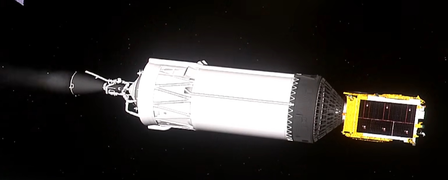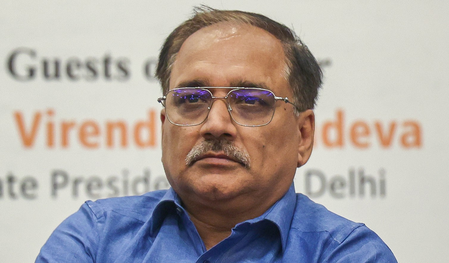
Sriharikota (Andhra Pradesh), Nov 2 (IANS) The Indian Space Research Organisation (ISRO) on Sunday successfully achieved the separation and injection of the Indian Navy’s GSAT-7R (CMS-03) communication satellite, which would strengthen the force’s space-based communications and maritime domain awareness capabilities.
The satellite, the most advanced communication satellite thus far for the Indian Navy and carried on a LVM3-M5 rocket, was launched from the Satish Dhawan Space Centre in Andhra Pradesh’s Sriharikota at the fixed time of 5.26 p.m.
In a mission update on its X account, the ISRO said: “CMS-03 separated successfully. Perfect injection”.
Union Minister of State (Independent Charge) for Science & Technology, Dr Jitendra Singh, lauded the ISRO on its latest achievement.
“Kudos Team #ISRO! India’s #Bahubali scales the skies, with the successful launch of #LVM3M5 Mission! “Bahubali” as it is being popularly referred, LVM3-M5 rocket is carrying the CMS-03 communication satellite, the heaviest ever to be launched from the Indian soil into a Geosynchronous Transfer Orbit (GTO). ISRO continues to script one success after another… Thanks PM Sh @narendramodi for the unflinching government support”, he said in a post on X.
This satellite is India’s heaviest communication satellite till date, weighing approximately 4,400 kg, and includes many indigenous state-of-the-art components developed specifically to meet the Navy’s operational requirements.
According to the ministry, GSAT-7R will provide robust telecommunication coverage across the Indian Ocean Region. Its payload includes transponders capable of supporting voice, data, and video links over multiple communication bands.
This satellite will significantly enhance connectivity with high-capacity bandwidth, enabling seamless and secure communication links between ships, aircraft, submarines, and Maritime Operations Centres of the Indian Navy.
In an era of complex security challenges, GSAT-7R represents the Indian Navy’s determination to protect the nation’s maritime interests, leveraging advanced technology through Aatmanirbharta.
“CMS-03 is a multi-band communication satellite that will provide services over a wide oceanic region, including the Indian landmass,” ISRO said.
The LVM3 rocket is India’s heaviest launch vehicle and can carry up to 4,000 kg to space. It has successfully launched missions like Chandrayaan-3 to the Moon, which made India the first country to land successfully near the lunar south pole. The designated LVM3-M5 will be its fifth operational flight.
“The launch vehicle has been fully assembled and integrated with the spacecraft and has been moved to the launch pad on October 26, for further pre-launch operations,” the ISRO said.
The GSAT-7R, designed exclusively for the Indian Navy, will succeed the GSAT-7 Rukmini satellite launched in 2013. With upgraded payloads, GSAT-7R is designed to expand secure, multi-band communications for the Navy and strengthen its operational reach across critical maritime domains.
The CMS-03 payload includes transponders for voice, data, and video links over C, extended C, and Ku bands.
–IANS
vd




